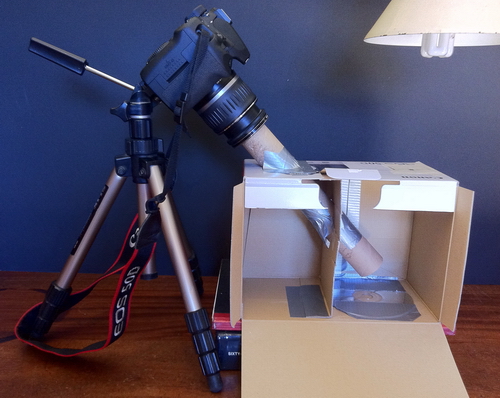
Making a simple spectroscope As we cannot "see" the separate wavelengths in any light source, we need a device to split them apart and show us what is actually happening. Two common devices are the prism and the diffraction grating. But don't try to use a prism taken from an old pair of binoculars: these are usually made of special glass to minimise the dispersion of light and won't work! The simplest and cheapest way is to use a diffraction grating. There are plenty of useful sites on the internet describing the mathematics behind diffraction gratings, and how to make your own simple spectrometer at home, so I'm not going to repeat all of that here. (Search for "Spectrosocope", "Diffraction grating DVD", etc) It turns out that you don't even need to buy a diffraction grating: You can make a very acceptable grating from an old DVD. The closer the lines in the diffraction grating, the better the spectrascope will separate the spectrum. You can buy lab grade diffraction grating material with 1000 lines/mm, or use an old CD or DVD as a grating. Comparisons:
These spectra were made using this simple setup:
The light slit will always be a compromise. Ideally it should be as narrow as possible, to allow the very fine lines to be resolved, but if it is too narrow then it is difficult to see the image - and if you want to photograph it, also difficult to focus the camera.
Some notes on using a DVD grating: With the incident light coming from directly above, the angle at which you observe the spectrum is centred around 45°. The usable section of the DVD surface is only about 35 mm wide, and you can just fit the main part of the visible spectrum into this. When adjusting the device, you will see the purple/blue of the next order spectrum starting next to the red lines of the order we are interested in - adjust so that these are moved just off the edge of the DVD. Next: Some CFL spectra |
© Copyright Peter Hers Consulting 2010. All Rights Reserved.

